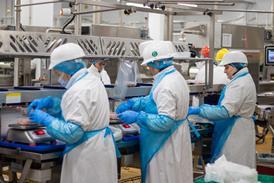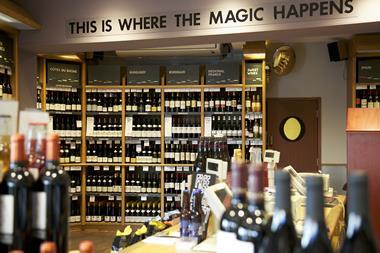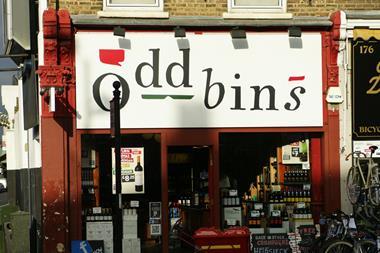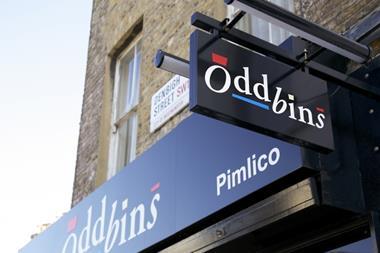For many in the industry, Oddbins looked to be, well, in the bin. So how does new MD Ayo Akintola aim to keep the reborn off-licence on high streets, asks Elinor Zuke
As Oddbins followed Wine Cellar and Threshers into the abyss, industry pundits were quick to write off the off-licence chain.
Semi-serious wine fans stock up at supermarkets and Majestic, while convenience stores cater for the rest, they argued. Aside from a few independents in the nicer enclaves of North London, premium wine shops with no parking have no place on British high streets.
But five months after Oddbins’ branding and 37 of its stores were bought from administrators by Raj Chatha’s EFB, new MD Ayo Akintola is sure the stores have a future. Akintola was part of Simon Baile’s management, as HR director and then deputy MD. So what does he think will have changed?
The starting points for a viable high-street off-licence must be range and pricing, says Akintola. It is in these areas where the biggest breaks with the Ancien Régime are evident. The old Oddbins was too focused on bulk selling, Akintola claims it offered a 25% discount on a case of six, but inflated the price of individual bottles to compensate. Instead, offering value on a single bottle is at the heart of this week’s relaunch.
“The 37 shops we have are right on the high street, where people want to buy a couple of bottles for dinner or as a present. We’ve tried to make it easier for those customers to shop with us.”
Price has also moved to a round-pound proposition. “Everyone knows a £6.90 bottle of wine is £7, so we sell it for £7,” Akintola adds.
It is in this spirit of reasonable pricing that Oddbins is inviting customers to decide the price of three of its lines. Under the ‘Everyone has a price what’s yours?’ campaign, all stores will run a blind tasting this weekend. Customers will be asked to write down what they would pay for each bottle, and the wines will go on sale in a couple of weeks at the average “recommended price”.
Gimmicky, perhaps but Akintola hopes it will start a “grown-up conversation” about price. And customers talking about their tastes to trained staff opens a dialogue, allowing recommendations and salesmanship a personal service the mults can’t offer.
It’s not just pricing architecture that has gone under the knife. Oddbins’ new range is almost unrecognisable. Of its previous 800 to 900 SKUs, just 100 remain even with 375 new lines, this makes the core range much smaller. Akintola is also giving stores complete autonomy, with each deciding which 200 to 300 SKUs to stock. Some will display their wines by grape variety, others by country. “It’s always been a disaster when head office tries to impose. What works in Kennington won’t necessarily work in Portobello.”
And what of the trade? Oddbins collapsed owing over £20m, but under its new ownership the chain has no problems getting suppliers on board, Akintola says. EFB’s handling of the supply-chain side has helped improve availability and lowered Oddbins’ cost base. And, he adds, “EFB’s financial standing has opened up a new avenue for us to source extremely good wines”.
When it comes to sourcing, all the wines chosen by head buyer Emma Nichols were picked with pricing in mind. Market forces have driven decisions. For instance, exchange rates have meant there are fewer Australian wines, as Nichols struggled to find wines that would deliver value.
Brands will be judged on the same criteria as smaller producers, says Nichols. They must taste right and the supplier must meet a retail price Oddbins deems suitable. Heavy promotion elsewhere is a turn-off. “Some brands trade very heavily on high-low pricing, which we don’t want to do,” she says.
Villa Maria and Concha y Toro are in this time, but Spain’s biggest wine brand in the UK, Campo Viejo, has been ditched. What’s more, customers have not been asking for it. “The question is whether they’d come to us to buy Campo Viejo when they can get it in a supermarket,” says Nichols. “They come to us to buy something different.”
Sign in to comment on this article
Not logged in before? Register for FREE guest access today.
You will be able to:
- Read more stories
- Receive daily newsletters
- Comment on stories
Advert


















No comments yet